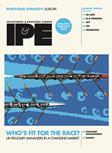Two complementary pay-as-you-go pension plans operating under one roof, Agirc and Arrco are managed by two pensions federations whose decision-making bodies are controlled by the company partners - Agirc and Arrco.
The two pensions federations are independent of each other but share a common financial management programme which is carried out by an economic interest group, whose remit is to secure the financial management of the two schemes’ reserves and consolidate them with reserves managed independently by the pensions federations. Agirc and Arrco’s combined reserves amount to €53bn, of which €15bn is managed directly by the interest group and €38bn by asset managers on behalf of the federations. The strategic asset allocation and investment strategy are determined by the federations.
A TIGHT REIN
The rules of the Agirc-Arrco partnership allow for a maximum 40% of the assets to be made available for investment of which 30% goes in equities and 70% in bonds. The portfolio has a set duration of seven years, but with the characteristics of the schemes themselves changing and markets evolving, Agirc-Arrco says this is never quite reached. “The controlling parties regularly revise the assumptions they make about demographics, macro-economic conditions and the financial markets that help determine the plans’ future liabilities, retirement age, and their resources,” it says.
The investment strategy may seem simple but Agirc-Arrco is fully aware that intermittent changes are often required and flexibility is important. “The strategic asset allocation allows a tactical margin of between 30 and 40% to be invested in equities depending how the markets evolve,” the partnership explains.
But it hasn’t always worked out as planned and a previous tactical allocation of 30% equities and 70% fixed income failed to deliver, leading to a major change of policy.
“The returns on these investments were insufficient because they did not make full use of the diversification possibilities at their disposal. The tracking error of these so-called actively managed assets was often below 1%, which meant they were more passively than actively managed investments. We decided that moving to a structure based on specialist funds would be a better means of generating more satisfactory results,” says Agirc-Arrco.
NEW BEGINNINGS
Agirc-Arrco’s solution was to create a new specialist management unit. The concept was circulated internally during 2004 before the make-up of the new organisation was formally ratified by Agric-Arrco’s decision-making bodies. Then consulting firm Mercer was invited on board to help out in several areas. Together Mercer and Agirc-Arrco:
drafted simulations and determined risk budgets for the different investment classes; specified what to look for in potential asset managers to ensure they could deliver the best returns using an active management approach; and launched a tender for offer and selection campaign in early 2005 that was completed that summer.
Once the administrative, payments and custody procedures were established, the first funds were created at the end of 2005 and beginning of 2006. Agirc-Arrco says the new organisation is based on a clearly defined segmentation of asset class and risk allocated to each investment manager. “This model is consistent with that used by other bodies, notably the FFR - the state-run French Pensions Reserve Fund,” it adds.
AN ORIGINAL CONCEPT IN TAA
One of the original features of the new portfolio is the role of tactical asset allocation. “We wondered how best to incorporate tactical allocation in an organisation based on specialist funds,” says Agirc-Arrco. Whether to outsource or build internal expertise was a key question the partners needed first to answer. “We decided on a third way: consider tactical allocation as an additional asset class in its own right with a set of corresponding funds being created accordingly.”
The economic interest group, which determines the strategic allocation, was brought in to help establish a marginal tactical allocation of 10% of the assets going to the tactical funds. Agirc-Arrco explains that these funds have a basic neutral composition of 50% equities and 50% bonds with the possibility or reducing or increasing the equity portion between 0 and 100%. The remaining 90%, which is in the ‘pure’ funds, is split so that 25% of the overall assets is in equities and 65% in bonds. “When the tactical funds are neutral, ie, 50% in equities, this means the overall equity allocation increases to 30%, since adding half the 10% tactical allocation to the ‘pure’ 25% equity allocation gives 30%. Similarly, the equity investments vary between 25% when the tactical allocation to equities is set at 0% and 35% when they are at a maximum 100 ,” the partnership says.
TWO-TIER DIVERSIFICATION
Agirc-Arrco is keen to stress that it has not completely abandoned the previous way it approached its investments which used a set of diversified funds. “On the contrary, the new specialist structure serves as an additional layer of diversification. By emulating the new methodology, the original funds have even seen their level of diversification evolve. The returns of the two approaches will of course be compared in the course of time,” Agirc-Arrco says.
HIGHLIGHTS AND ACHIEVEMENTS
This is a somewhat unusual operation as it combines two schemes under one roof with a common investment strategy and management board.
The Agirc-Arrco’s success comes mainly in its understanding and ability to get maximum results from a narrow investment strategy which uses the traditional mainstay asset classes of equities and bonds.
Adopting a set of specialist funds and tactical asset allocation programmes have helped the partnership achieve excellence in shifting strategic weightings at the precise time to benefit from the slightest movements in the markets and optimise its diversification across segments and regions within each asset class.
The efficient risk management process that complements this clever mix of strategic and tactical allocation processes ensures it can invest securely and with confidence.






















No comments yet